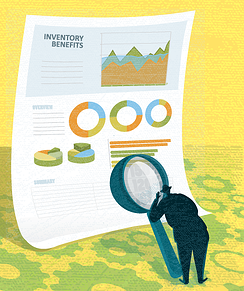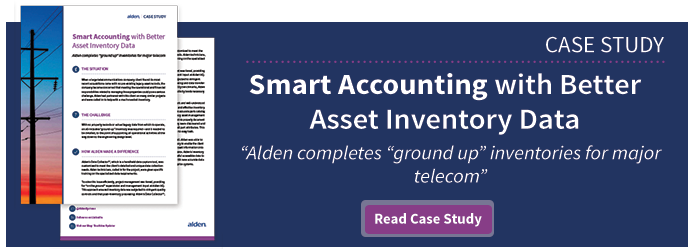Four-Wall Inventory: The Real Value
 In today's economic climate, with efficiency and cost-effectiveness of utmost important, companies are compelled to evaluate the value of every business process in relation to cost. This includes the vital task of inventory. To control asset inventory costs, some have chosen to use a targeted methodology that involves inventorying only specific items that meet a certain cost threshold. While this may potentially save time, money, and sound like a great idea at first, every business has in its possession many lower-priced assets that would not be included in this type of inventory and be viewed as expense items.
In today's economic climate, with efficiency and cost-effectiveness of utmost important, companies are compelled to evaluate the value of every business process in relation to cost. This includes the vital task of inventory. To control asset inventory costs, some have chosen to use a targeted methodology that involves inventorying only specific items that meet a certain cost threshold. While this may potentially save time, money, and sound like a great idea at first, every business has in its possession many lower-priced assets that would not be included in this type of inventory and be viewed as expense items.
What you may not be considering is that these assets still have value and move the financial needle, especially when considered as a large-volume group. For example, these lower-value assets are often essential to system integrity and are often purchased in huge quantities, which constitutes a significant expense. Simply put, it may not be worth leaving the assets off the inventory roster.
Four Walls = A Complete Inventory Process
Beyond a limited inventory that captures only "high-value" assets above a certain cost threshold, a four-wall inventory can be utilized to take into account all manner of "lesser" items. Why should you take the time to do an inclusive, all-encompassing inventory? We have compiled a few reasons:
Catch missed assets
This type of inventory digs into all the corners of your asset stockpile, regardless of value, and as a result, has a tendency to identify and quantify items that may have been missed. A four-wall inventory can also ferret out items that may have been integrated into your inventory management system without being properly cataloged. In short: a four-wall inventory makes great use of an organized inventory management software system that integrates with your accounting system and produces a richer, more accurate picture of your full complement of business assets.
Stay up-to-date on pricing
When a company employs an inventory process that only counts items above a certain price threshold and then does not perform a complete inventory for awhile, the cost of items on the cusp of being "pricey enough" may tip over the pre-set threshold and be missed for long periods of time. Again, no matter how small the price tag, the cost of these assets add up.
Save your business from "spares headaches"
Having well-calculated min/max, safety stock or spare levels is invaluable to your business's continuous, day-to-day operations. Choosing not to inventory a set of items that are mission-critical, regardless of individual cost, can cause problems down the road. Having too few of a vital asset may lead to service interruptions. Having too many can result in expensive, wasteful excesses. Counting every asset in your possession means an opportunity to track all your spare assets effectively.
While a targeted inventory may seem like a cost saver, it must be understood this type of inventory neglects the big picture of your business assets from a cost and operational perspective. Saving time and manpower in the short term by cutting an inventory short may sound enticing, but over the long haul, money can--and likely will--be lost. Our take on this: a four-wall inventory is worth the effort.
You may also be interested in reading: Taking out the Trash: Disposing of Equipment Excess after Inventory

Comments